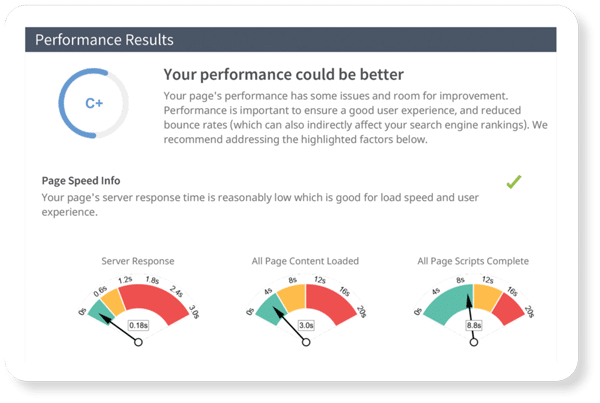Because the algorithms that guide search engines and social media are so huge, with billions of lines of code, they are mysterious. And things that are mysterious are perfect breeding grounds for rumors.
As with most rumors, most of this “inside information” from your friends who know someone in the tech world didn’t have a shred of truth, but they sounded good. The problem is, rumors can get in the way of actual information and they can affect how users interact with these tools and apps, so companies like Google and Facebook occasionally work to dispel rumors to keep people from freaking out about stuff that isn’t even true.
In January of this year, Instagram (which is owned by Facebook) did this to quash a series of incorrect rumors and to give some insight into how its algorithm decides just what you’ll see on your feed.
Since we spent the first blog of this month telling you how your practice or business needs an Instagram account, in this month’s second blog we might as well stay with this theme are delve into the insights given by Instagram about how its algorithm actually works. This comes straight from the people at the social media giant.
The company said there are six key factors that influence its algorithm:
- Interest
- Relationship
- Timeliness
- Frequency
- Following
- Usage
Let’s walk through them.
Are you interested?
The Instagram algorithm is thorough. It keeps track of who you follow, and who and what you like. It notes your interactions. It makes judgments based on this data to decide what to place in your feed, and how high to place a post. If you want the tech speak, here it is. The algorithm makes decisions based on “past behavior on similar content and potentially machine vision analyzing the actual content of the post.”
So, what you’ll see pop up in the feed of your practice Instagram account is a combination of all of your Instagram behaviors. Who you follow, who you interact with the most, photos you are tagged in, and all of your commenting history.
What are the most important engagements to the algorithm? Comments, shares, likes, and views.
Who’s your Daddy…or Mom?
The Instagram algorithm pretty much knows who your relatives are (if they have Instagram accounts, of course). And it prioritizes posts from your friends, family, and accounts you care about.
In order to show you what you want to see, the algorithm uses interactions from you to figure out who is close to you and whose posts you would probably like to see. How does it do this? The algorithm tracks how you use the app, weighing people whose content you like, people you direct message, people you search for, and people you know in real life.
For instance, if you find an old friend and follow that person, you’ll see lots of their content in your feed. If you engage with that content, that person will probably be elevated in the algorithm’s eyes as being important to you. If you don’t interact, it will assume following that person was maybe a passing fancy.
Timeliness
Instagram’s algorithm is caring more and more about when a photo or video was posted, in addition to how much engagement the post gets. This is because it always wants to serve the user the latest, most interesting posts.
This makes it important to post regularly. At Advice, we advocate our practices post to Instagram once a day, if possible. At least that’s a goal to work toward. Also, research has shown that the best time to post on Instagram is between 9 and 11 a.m. EST.
How busy are you on Instagram?
The algorithm also understands how often you use Instagram and it delivers accordingly. For instance, if you open the app many times a day, your feed will be more chronological, as it wants you to see the latest posts since you were in the app just a couple hours ago.
But if you check Instagram less frequently, as a practice account would do, your feed will simply revolve around what the algorithm thinks you want to see, not how current it is.
Who are you following?
If you follow lots of other businesses and people on your practice’s Instagram account, the algorithm will keep tabs on who you are following. Rather than show all of the posts from every account you follow, it will show some from everyone because it has more to choose from.
How much time are you on it?
Finally, the app keeps track of how much time you’re on it. If you’re on it longer, posts rotate more frequently, as the assumption is, you’ll see them and want more.
However, if you only spend a few minutes a day (as would most practices), then the algorithm simply delivers the day’s highlights to your feed.
A couple of final rumor beatdowns
OK, all of the above items about the Instagram algorithm have involved some misperceptions and rumors. That’s why Instagram sought to spell out how its algorithm does some of its mysterious work. The recent information from Instagram also sought to quash five specific falsehoods, such as that videos received heavier emphasis than photos. Here are the corrections.
#1 — Photos and videos are treated equally. There is no bias here. Of course, if you engage more with videos, you’ll see more videos in your post. Same with photos.
#2 — Fake interactions are not counted. Instagram uses machine learning to sniff out the fakes.
#3 — Comment lengths don’t matter. The rumor was that comments under three words didn’t count.
#4 — All account types are treated equally. People worried that switching to a business profile would hurt their engagement. Nope.
#5 — The first 30 minutes is it. Rumor was that the first 30 minutes after posting was critical and that posts that got more engagement within that time were prioritized. Instagram says it does not prioritize based on early interactions.
OK, now you know the ins and outs of the Instagram algorithm and how it will prioritize what you see in your practice account feed. What? You don’t have an Instagram account for your practice? The time is now. For more information read this month’s first MyAdvice blog. If you have further questions, get a hold of your MyAdvice representative, or give us a call or fill out a contact form.


